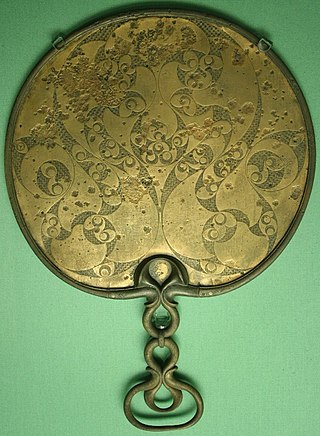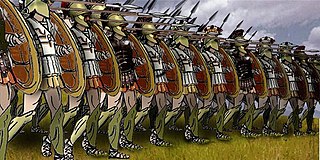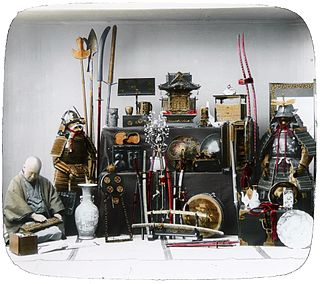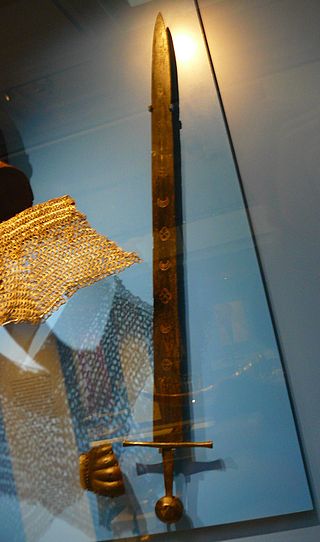
Hoplites were citizen-soldiers of Ancient Greek city-states who were primarily armed with spears and shields. Hoplite soldiers used the phalanx formation to be effective in war with fewer soldiers. The formation discouraged the soldiers from acting alone, for this would compromise the formation and minimize its strengths. The hoplites were primarily represented by free citizens – propertied farmers and artisans – who were able to afford a linen or bronze armour suit and weapons. It also appears in the stories of Homer, but it is thought that its use began in earnest around the 7th century BC, when weapons became cheap during the Iron Age and ordinary citizens were able to provide their own weapons. Most hoplites were not professional soldiers and often lacked sufficient military training. Some states maintained a small elite professional unit, known as the epilektoi or logades since they were picked from the regular citizen infantry. These existed at times in Athens, Sparta, Argos, Thebes, and Syracuse, among other places. Hoplite soldiers made up the bulk of ancient Greek armies.
A sword is an edged, bladed weapon intended for manual cutting or thrusting. Its blade, longer than a knife or dagger, is attached to a hilt and can be straight or curved. A thrusting sword tends to have a straighter blade with a pointed tip. A slashing sword is more likely to be curved and to have a sharpened cutting edge on one or both sides of the blade. Many swords are designed for both thrusting and slashing. The precise definition of a sword varies by historical epoch and geographic region.
A spear is a pole weapon consisting of a shaft, usually of wood, with a pointed head. The head may be simply the sharpened end of the shaft itself, as is the case with fire hardened spears, or it may be made of a more durable material fastened to the shaft, such as bone, flint, obsidian, copper, bronze, iron, or steel. The most common design for hunting and/or warfare, since ancient times has incorporated a metal spearhead shaped like a triangle, diamond, or leaf. The heads of fishing spears usually feature multiple sharp points, with or without barbs.

A rapier or espada ropera is a type of sword used in Renaissance Spain to designate a sword with a straight, slender and sharply pointed two-edged long blade wielded in one hand. It was widely popular in Western Europe throughout the 16th and 17th centuries as a symbol of nobility or gentleman status.

A shield is a piece of personal armour held in the hand, which may or may not be strapped to the wrist or forearm. Shields are used to intercept specific attacks, whether from close-ranged weaponry or projectiles such as arrows, by means of active blocks, as well as to provide passive protection by closing one or more lines of engagement during combat.

A buckler is a small shield, up to 45 cm in diameter, gripped in the fist with a central handle behind the boss. It became more common as a companion weapon in hand-to-hand combat during the Medieval and Renaissance periods. Its size made it poor protection against missile weapons but useful in deflecting the blow of an opponent's weapons, binding his arms, hindering his movements, or punching him.

A greave or jambeau is a piece of armor that protects the leg.

Swordsmanship or sword fighting refers to the skills and techniques used in combat and training with any type of sword. The term is modern, and as such was mainly used to refer to smallsword fencing, but by extension it can also be applied to any martial art involving the use of a sword. The formation of the English word "swordsman" is parallel to the Latin word gladiator, a term for the professional fighters who fought against each other and a variety of other foes for the entertainment of spectators in the Roman Empire. The word gladiator itself comes from the Latin word gladius, which is a type of sword.

Celtic art is associated with the peoples known as Celts; those who spoke the Celtic languages in Europe from pre-history through to the modern period, as well as the art of ancient peoples whose language is uncertain, but have cultural and stylistic similarities with speakers of Celtic languages.

A javelin is a light spear designed primarily to be thrown, historically as a ranged weapon. Today, the javelin is predominantly used for sporting purposes such as the Javelin throw. The javelin is nearly always thrown by hand, unlike the sling, bow, and crossbow, which launch projectiles with the aid of a hand-held mechanism. However, devices do exist to assist the javelin thrower in achieving greater distances, such as spear-throwers or the amentum.

Heavy infantry consisted of heavily armed and armoured infantrymen who were trained to mount frontal assaults and/or anchor the defensive center of a battle line. This differentiated them from light infantry who are relatively mobile and lightly armoured skirmisher troops intended for screening, scouting, and other tactical roles unsuited to soldiers carrying heavier loads. Heavy infantry typically made use of dense battlefield formations, such as shield wall or phalanx, multiplying their effective weight of arms with force concentration.
In Europe, the Iron Age is the last stage of the prehistoric period and the first of the protohistoric periods, which initially meant descriptions of a particular area by Greek and Roman writers. For much of Europe, the period came to an abrupt end after conquest by the Romans, though ironworking remained the dominant technology until recent times. Elsewhere, the period lasted until the early centuries AD, and either Christianization or a new conquest in the Migration Period. Iron working was introduced to Europe in the late 11th century BC, probably from the Caucasus, and slowly spread northwards and westwards over the succeeding 500 years. For example, the Iron Age of Prehistoric Ireland begins around 500 BC, when the Greek Iron Age had already ended, and finishes around 400 AD. The use of iron and iron-working technology became widespread concurrently in Europe and Asia.
The oldest surviving manual on western swordsmanship dates back to the 14th century, although historical references date fencing schools back to the 12th century.

Major innovations in the history of weapons have included the adoption of different materials – from stone and wood to different metals, and modern synthetic materials such as plastics – and the developments of different weapon styles either to fit the terrain or to support or counteract different battlefield tactics and defensive equipment.

Illyrian weaponry played an important role in the makeup of Illyrian armies and in conflicts involving the Illyrians. Of all the ancients sources the most important and abundant writings are those of Ennius, a Roman poet of Messapian origin. Weapons of all sorts were also placed intact in the graves of Illyrian warriors and provide a detailed picture for archaeologists on the distribution and development of Illyrian weaponry.

In the European High Middle Ages, the typical sword was a straight, double-edged weapon with a single-handed, cruciform hilt and a blade length of about 70 to 80 centimetres. This type is frequently depicted in period artwork, and numerous examples have been preserved archaeologically.

Ancient Greek art stands out among that of other ancient cultures for its development of naturalistic but idealized depictions of the human body, in which largely nude male figures were generally the focus of innovation. The rate of stylistic development between about 750 and 300 BC was remarkable by ancient standards, and in surviving works is best seen in sculpture. There were important innovations in painting, which have to be essentially reconstructed due to the lack of original survivals of quality, other than the distinct field of painted pottery.

The military nature of Mycenaean Greece in the Late Bronze Age is evident by the numerous weapons unearthed, warrior and combat representations in contemporary art, as well as by the preserved Greek Linear B records. The Mycenaeans invested in the development of military infrastructure with military production and logistics being supervised directly from the palatial centres. This militaristic ethos inspired later Ancient Greek tradition, and especially Homer's epics, which are focused on the heroic nature of the Mycenaean-era warrior élite.

The Caetrati were a type of light infantry in ancient Iberia who often fought as skirmishers. They were armed with a caetra shield, swords, and javelins.















